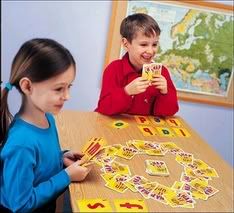To date, over 180 research studies have confirmed that phonics is the best way to teach children how to read. Unfortunately, 80% of our nations schools do not use an intensified phonics approach for reading instruction.
They use a whole word approach (see and say) or a combination of phonics and whole word.
While children can learn using the whole word method, it is not the best or most efficient way to learn how to read. The whole word method teaches reading through memorization and guessing.
Unlike the Japanese and Chinese languages which are picture based, the English language is phonetic. There are only 44 sounds while there are about 1 million words in English.
These facts readily explain why having to memorize 44 sounds as opposed to memorizing hundreds of thousands of words is the most efficient way to learn to read.
Reading and writing is simply talking on paper. When children learn to talk, they do so by imitating sounds. They then combine the sounds to form words.
The brain is programmed to learn language in this fashion. Therefore, the most efficient way to learn to read is through phonics because it teaches children to read the same way they learned to talk.
A two decades study on the best way to learn how to read, funded by the National Institute of Health, discovered that the three important aspects of reading - identifying letters, identifying sounds associated with the letters, and reaching for meaning of the written word - are each accomplished by different parts of the brain.
A three-part plan that incorporates this information to guide you as you help your child learn to read.
- Part 1: Phonemic awareness, or learning the individual sounds that constitute a language, for example, "kuh" as the sound of "c".
- Part 2: Phonics, or the letter-sound relationships available in the language, for example, "kuh---aah---tuh" sounds out "cat".
- Part 3: Exposure to meaning of the written word through reading and being read to, for example, "kuh---aah---tuh" sounds out "cat" which is "a furry mammal that purrs".
These elements should be used as building blocks, each necessary to support the next. With phonemic awareness as the first block, a child can begin to puzzle out words in books.
With the help of a parent or sibling by his side he'll begin to have the answers to questions he will soon begin to ask.
Now is the time to point out important clues, such as how letter sounds blend, how an "e" at the end of a word changes a vowel sound from short to long, how some consonants have more than one sound.
Discuss lower and upper case letters. Point out the eighteen frequently used words best learned by sight. And remember to keep reading to your child to include exposure to meaning, the all important part 3.
What does your child need in order to read well?
You need to provide 4 things to your child, preferably at an early age, to build a proper reading foundation:
- Phonics information and the ability to manipulate the sounds that make up spoken language.
- Phonics skills and the understanding that there are relationships between letters and sounds.
- The ability to read fluently with accuracy, speed, and expression.
- To apply reading comprehension strategies to enhance understanding and enjoyment of what they read.
There are many commercial reading programs available that combines whole word and phonics based principles. Whatever reading program you decide to use, make sure that it's recommended by parents and teachers, find out how long the program has been on the market and verify it's success rate.
By Rich Daniels




0 comments:
Post a Comment